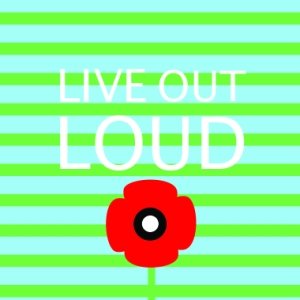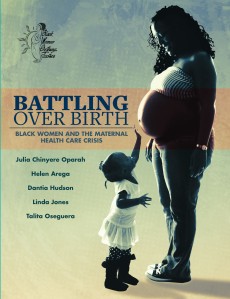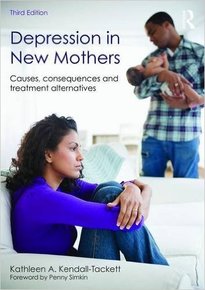Teresa Pitman examines the importance of responding to a baby’s tears, the possible benefits of crying and what makes crying such a problem for parents.
Waiting for my flight at the airport, I saw a father carrying his baby. The baby wasn’t crying hard, just unhappy and fussing, and the dad was patting his back gently as he walked up and down between the seats filled with tired travelers. It made me smile, but I was shocked when an older woman stood up and planted herself in front of the father. In a voice loud enough for all of us to hear, she berated him for “spoiling that baby” and let him know that the infant would be “ruined for life” if he kept on carrying and soothing him.
She couldn’t have been more wrong.
Responding

Responding to a crying baby is important for the baby’s development in many ways. For one thing, it reduces the amount of crying as the baby gets older. Silvia Bell and Mary Ainsworth from Johns Hopkins University found in 1972 that mothers who responded quickly to crying in the first few months had babies who cried less often and for shorter periods of time at one year, compared with the mothers who delayed responding or sometimes ignored the crying.
And now more recent research is showing that responding to your crying baby protects him or her against future mental health problems and negative reactions to stress. Megan Gunnar and others found that they could measure the levels of the stress hormone cortisol in a baby’s system by offering the baby a soft strip of fabric with a sweet taste to suck. This allowed them to find out whether a particular situation was causing the baby stress, and how much.
In a 2009 presentation, Gunnar explained that the stress hormone system is very reactive in the first three or four months after birth. The baby is easily stressed by many things that seem minor upsets to the rest of us: being away from his or her mother, being bathed, having diapers changed and being hungry. These everyday events can send the baby’s cortisol levels shooting up. But when the baby’s caregiver responds to the baby’s cries and other signals of being upset by comforting and soothing the baby, the levels of cortisol go back down. Gunnar adds that this sensitive, responsive care is needed throughout early childhood to maintain cortisol at healthy levels.
Early life experiences set the stage for physical health in later life. Reducing early toxic stress is key to preventing disease in adults (Shonkoff, 2016).
 Why does the cortisol level matter? Because consistently elevated cortisol affects the way the baby’s brain develops, the way he responds to stress in the future, his immune system, his risk of obesity and other areas of development. It’s no small thing.
Why does the cortisol level matter? Because consistently elevated cortisol affects the way the baby’s brain develops, the way he responds to stress in the future, his immune system, his risk of obesity and other areas of development. It’s no small thing.
The good news is that you don’t have to be a “perfect” mother to protect your baby from stress. I learned that first-hand. For the first couple of weeks of my eldest son’s life, he was pretty easy-going. He nursed fairly often but slept most of the time in between feedings. I thought I was a brilliant mother.
At two weeks, however, that honeymoon was over. He was often fussy, cried more often than I’d expected, and wanted to breastfeed on and off all evening long. I tried everything I could think of to soothe him, and while sometimes he’d settle down, often I couldn’t figure out what he wanted.
I remember sitting and holding him against my shoulder, his eyes closed tightly and his little face red from the effort of crying, and saying: “I don’t know what to do to help you, but I’m here.” It seemed to be the best I could do. Now that I’ve had four children and nine grandchildren, I know the truth of that comment. Sometimes a baby’s crying can be comforted away and sometimes it can’t, but the research says that just being there makes all the difference in the world. Crying in the arms of a loving mother is a very different experience for the baby than crying alone in a crib.
the research says that just being there makes all the difference in the world.
 Crying is so universal it seems that there should be some purpose to it beyond just driving parents crazy. Apparently there is—and the need to breastfeed is part of that purpose. Dr. Ron Barr, a Canadian physician who has researched colic and infant crying for many years, has looked at babies around the world, not just in North America or Europe, so he’s able to talk about the aspects of crying that cross cultural lines. He finds a consistent pattern everywhere in the world: babies don’t cry too much in the first week or two, then they steadily increase the amount of crying over the next few weeks. It peaks at around two months, and then gradually decreases.
Crying is so universal it seems that there should be some purpose to it beyond just driving parents crazy. Apparently there is—and the need to breastfeed is part of that purpose. Dr. Ron Barr, a Canadian physician who has researched colic and infant crying for many years, has looked at babies around the world, not just in North America or Europe, so he’s able to talk about the aspects of crying that cross cultural lines. He finds a consistent pattern everywhere in the world: babies don’t cry too much in the first week or two, then they steadily increase the amount of crying over the next few weeks. It peaks at around two months, and then gradually decreases.
Barr has also found that in all societies there are babies who cry more—sometimes much more—than average. We’d call them “colicky.” There’s nothing medically wrong with these babies, Barr says. They are just at the extreme end of the “crying continuum.”
Benefits of crying
Barr’s research, and other research he’s reviewed, came up with several possible benefits of crying.
- In traditional cultures, where breastfeeding is the norm, mothers usually respond to the baby’s crying or fussing by offering the breast. Usually the baby will nurse briefly three or four times per hour. As Dr. Barr puts it, in those cultures, the baby controls the feeding process. In ours, parents usually control it. Frequent crying in the early weeks and months helps to make sure the baby gets plenty of milk and also establishes milk production so that there will continue to be abundant milk for many months to come.
- Again, in those traditional cultures, the parents pick up the baby when she cries and keep her close to them—and this protects the baby from predators and other dangers. A baby not in her parent’s arms or next to an adult body is at risk, so frequent crying makes sure she’s safe. Our babies aren’t as much at risk from wild animals or exposure to the elements, but they don’t know that. As Dr. Barr notes: “Separation causes crying, and contact often stops it.”
- When mothers respond to the cries by breastfeeding, the baby gets benefits beyond just milk. The frequent feeding at the breast stimulates production of the milk-producing hormone prolactin, suppressing ovulation and making it less likely that the mother will get pregnant again. Prolactin is highest during night feedings, and we know that frequency of suckling at the breast seems to be more important in stopping ovulation than the duration of each feeding. In other words, it’s more effective (in terms of suppressing fertility) for the baby to suckle for five short feedings in the evening than for two long ones. Frequent fussing and feeding in the evening mean two good things from a biological perspective: the current baby won’t have his milk supply diminished by another pregnancy, and the mother is less likely to become anemic due to iron loss through menstruation.
- When parents are not frustrated and angry, crying can create caring and nurturing emotions and strengthen the bonds between parents and baby. You know how that newborn cry tugs on your heart. These early weeks are a time for parents and baby to get to know each other, and for the parents to learn what soothes and comforts the baby. Frequent crying gives them lots of opportunities to practice and even feel successful!
If responding to a baby’s cries is so important, you’d think it would be “built-in” to mother’s brain. Actually, it is. Dr. James Swain, a Canadian professor at Yale University, has been studying brain imaging of mothers’ responses to crying.
“A baby crying activates the circuits in the mother’s brain that are similar to those that become overactive in people with obsessive-compulsive disorder,” Swain says.
“It also affects the parts of the brain that motivate us, help us appraise the environment, and calm us so we don’t get too angry.”
 This brain activity makes sense when you think about the baby’s needs: when she cries, she wants someone to be motivated to respond, to be a little obsessed with making sure everything is okay, and to stay calm while soothing her.
This brain activity makes sense when you think about the baby’s needs: when she cries, she wants someone to be motivated to respond, to be a little obsessed with making sure everything is okay, and to stay calm while soothing her.
Breastfeeding affects how your brain responds, as well. In 2011, Swain and his fellow researchers had mothers who were exclusively breastfeeding scanned with MRI machines as they heard their two to four-week-old babies crying. They compared the MRI results to those of exclusively formula-feeding mothers who listened to their babies crying. The breastfeeding mothers, on average, had higher activity in the parts of their brains linked to nurturing behaviors and showed greater sensitivity to their babies when seen again at four months postpartum.
As part of his original study, Swain also compared mothers who had given birth vaginally and those who had elective cesarean sections. When the first set of scans was done, the babies were all between two and four weeks old, and Swain found that the mothers who had delivered vaginally were significantly more sensitive to the cries of their own babies. While none of the mothers in the study had clinical depression, those who were less sensitive to their babies’ crying also showed more symptoms of depression.
Swain is quick to add: “This doesn’t mean that mothers who have elective cesareans are bad mothers. We repeated the brain scans when the babies were about four months old, and by then the differences were much less. All that time holding and caring for and interacting with the baby compensated for any difference due to the method of birth.”
Swain’s work is built on past studies of the responses of adult brains to infant crying. Seifritz, a Swiss researcher, found in 2003 that the brains of women with or without children responded more to babies’ laughter and crying than men without children did, but parents of both genders showed stronger reactions to crying. That reinforces Swain’s observations that the experience of caring for their babies changes how parents’ brains respond to crying. If crying is supposed to help parents and babies connect, why is it also linked to abuse? It’s well known that most cases of babies being hit or shaken are related to crying.
What makes crying such a problem for parents in our society?
For one thing, parents are often warned not to do the things that traditional parents naturally do to soothe their babies when they cry. Research by Barr and others has shown that babies cry only half as much when parents carry them in close contact (skin to skin as much as possible), sleep next to them, feed them very frequently, and respond quickly if they cry or fuss. But most parents in Western societies are told that these soothing actions will “spoil” the baby or that the baby is being “manipulative,” so the baby cries more and more, and the parent gets more and more frustrated.
For another, many parents don’t have someone to lend a hand when the crying starts to wear them down. Your brain may be saying “Respond to that baby” but your body is saying “Sleep, need sleep!” That’s when having a grandmother, partner, postpartum doula, or other support person can make all the difference, giving the mother a break while still reassuring the baby that someone is here to hold him and he is safe.
Let’s encourage mothers to listen to their hearts in responding to their babies since the newest research is confirming that as the best way to protect babies from the harmful effects of stress. Okay, the message to “pick up and cuddle the baby” is actually coming from the brain, not the heart—but we feel it in our hearts.
References
 Barr, R. & Elias, M. (1988). Nursing interval and maternal responsivity: effect on early infant crying. Pediatrics 81(4), 529–36.
Barr, R. & Elias, M. (1988). Nursing interval and maternal responsivity: effect on early infant crying. Pediatrics 81(4), 529–36.
Barr, R., Paterson, J., MacMartin, L., Lehtonen, L., & Young, S. (2005). Prolonged and unsoothable crying bouts in infants with and without colic. J. Dev. Behav. Pediatr. 26(1), 14–23.
Bell, S. & Ainsworth, M. (1972). Infant crying and maternal responsiveness. Child Dev. 43(4), 1171–90.
Gunnar, M., Herrera, A., & Hostinar, C. (2009). Encyclopedia on Early Childhood Development. Centre of Excellence for Early Childhood Development. doi:10.4135/9781483340333.n58

Gunnar, M. R., & Barr, R. G. (1998). Stress, early brain development, and behavior. Infants & Young Children, 11(1), 1–14. doi:10.1097/00001163-199807000-00004
Hunziker, U. & Barr R. (1986) Increased carrying reduces infant crying: a randomized controlled trial. Pediatrics 77(5),641–8.
Seifritz, E., Esposito, F., Neuhoff, J., Lüthi, A., Mustovic, H., Dammann, G., von Bardeleben, U., Radue, E., Cirillo, S., Tedeschi, G., & Di Salle, F. (2003). Differential sex-independent amygdala responses to infant crying and laughing in parents versus non-parents. Biol. Psychiatry 54(12),1367–75.

Shonkoff, J. (2016). Capitalizing on advances in science to reduce the health consequences of early childhood adversity. JAMA Pediatr., 170(10),1003-1007. doi:10.1001/jamapediatrics.2016.1559.
Swain, J., Lorberbaum, J., Kose, S., & Strathearn, L. (2007). Brain basis of early parent-infant interactions. J. Child Psychol. Psychiatry 48(3–4), 262–87.
Swain, J., Tasqin, E., Mayes, L., Feldman, R., Constable, R. & Leckman, J. (2008). Maternal brain responses to own baby-cry is affected by cesarean section delivery. J. Child Psychol. Psychiatry 49(10), 1042–1052.
Swain, J., Kim, P., & Ho, S. (2011). Neuroendocrinology of parental response to baby-cry. Journal of Neuroendocrinology, 23(11), 1036–1041. http://doi.org/10.1111/j.1365-2826.2011.02212.x.

Teresa Pitman mother of four and grandmother of eight lives in Canada and has been supporting mothers for more than 35 years with birth and breastfeeding. She is a prolific writer and popular speaker, much loved by all whose lives she touches. Why not buy her latest book for a mom-to-be Preparing to breastfeed: A pregnant woman’s guide?
More about crying:
 Controlled Crying and Long-Term Harm
Controlled Crying and Long-Term Harm
Neuroscience Shows Breastfeeding Is Not Just Milk
Simple Ways to Calm a Crying Baby and Have a More Peaceful Night’s Sleep
Why Cry-It-Out Can Be Bad for the Brain























July 9, 2017 at 12:53 pm
Thank you so much for a very well written article. This is a subject near and dear to my heart since my own mothering experiences and in my daily work with parents of infants as a lactation consultant. Parents learning this information are freed to listen to their baby and their instincts and their parenting journey becomes more enjoyable!
LikeLike
January 24, 2018 at 1:15 pm
Colic is the excessive and frequent crying of a baby who appears to be in good health. It’s not a disease, hungry, wet, tired, hot or cold, but inexplicably miserable – pediatricians call it colic means your Baby Got colic. This is a common problem that affects up to one in five babies. It starts around the age of 2 weeks if your child is old (or later if prematurely), Colic has 3 three types to know Infant Colic or Baby Colic, renal colic (caused by kidney stones) and biliary colic (caused by gallstones).for symptoms causes and treatment check out this https://www.drugsbanks.com/2018/01/22/baby-got-colic/
LikeLike